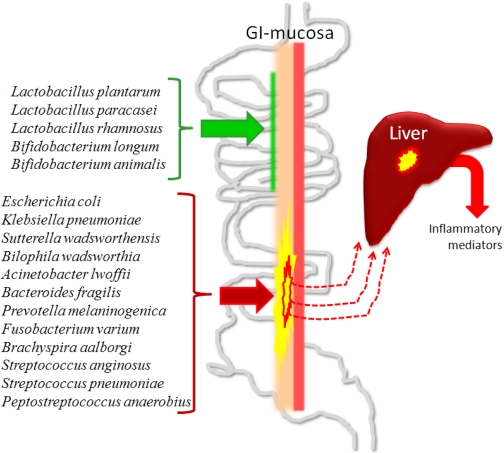Figure 1.
Some examples of bacterial species that are likely to have positive effects on the ecology of the gastro-intestinal (GI) channel (certain strains successfully used as probiotics), and some other examples of species that can occasionally be found as significant parts of resident human microbiota, and are known to possess pathogenic potential (involvement in human infections). The aggressive potential of the adverse species can lead to a weakened barrier effect of the mucosa and leakage of bacterial components that end up in the liver, which will give an inflammatory response. Direct gene identification has shown that the examples of adverse bacteria described form a substantial part of the microbiota in the gastro-intestinal tract of individuals without diagnosed disease [43,45,47,49].

